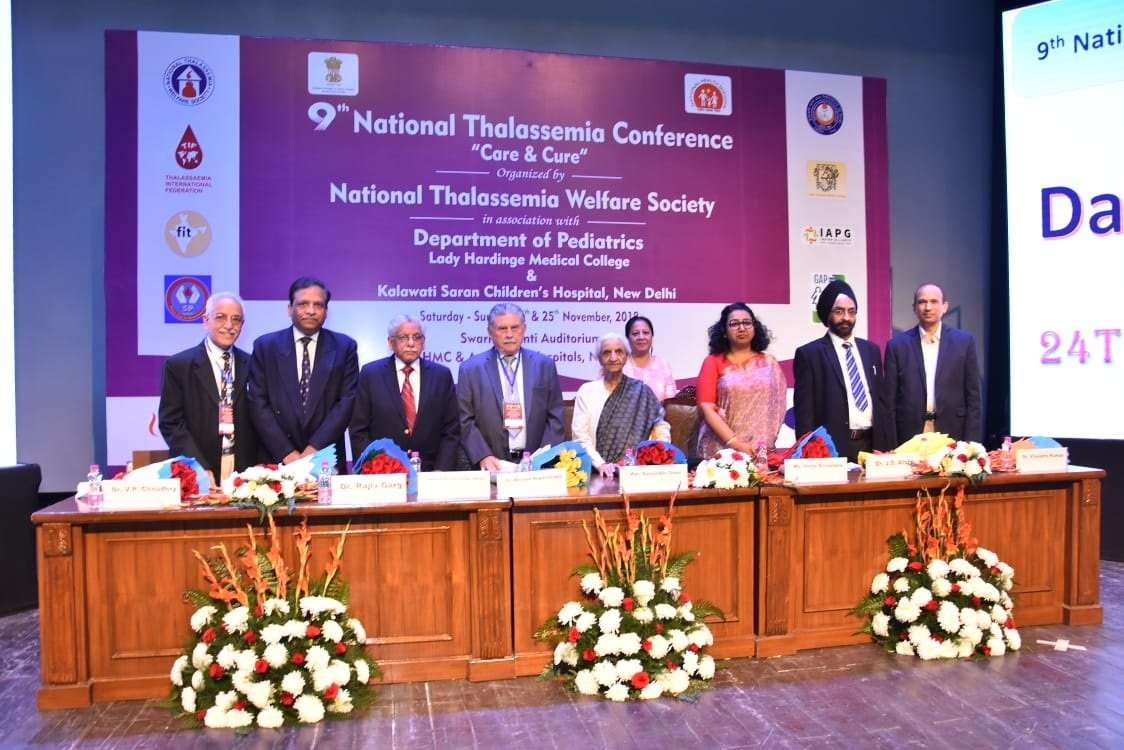A new drug in pipeline to improve haemoglobin level in Thalassemia patients
November 26, 2018 | Monday | News
“Prevention is Cure” was the emphasis of the conference which highlighted important issues such as Thalassemia management, Blood Transfusion, Latest developments in gene therapy, National Policy of Thalassemia, Benefits of Disability for Thalassemia, Quality of Thalassemia patients
To improve the quality of life of existing patients and prevent the birth of Thalassemia major children in future, a 2-day Conference was organised by the National Thalassemia Welfare Society (NTWS) in association with Department Paediatrics LHMC.
The 9th edition of National Thalassemia Conference was held at Swarn Jayanti Auditorium, Lady Hardinge Medical College (LHMC), New Delhi.
“Prevention is Cure” was the emphasis of the conference which highlighted important issues such as Thalassemia management, Blood Transfusion, Latest developments in gene therapy, National Policy of Thalassemia, Benefits of Disability for Thalassemia, Quality of Thalassemia patients, etc.
Dr J.S. Arora, General Secretary, National Thalassemia Welfare Society; Dr. Sandeep Soni, Haemato-oncologist; Dr. S.K. Prasad, Deputy Commissioner, Disability, MoSJE; T.D.Dhariyal, Commissioner Disability and Vinita Srivastava, Senior Consultant & Coordinator, Blood Cell, National Health Mission MOHFW were present at the conference.
Dr J.S. Arora mentioned about the new drug ‘Luspatercep’ which is in the pipeline and will improve Haemoglobin level in Thalassemia patients.
He added that “this drug will drastically reduce the requirement of blood and iron chelating agent’s ultimately improving quality of the patient’s life”. He explained in detail about the research on patients who received Luspatercept subcutaneously every 3 weeks for up to five doses over 12 weeks.”
In the transfusion-dependent, 20 patients (83%) achieved at least a 33% decrease in transfusion burden over any 12-week period compared with baseline, and 16 (67%) achieved at least a 50% decrease. In the non-transfusion-dependent cohort, 21 patients (78%) achieved at least a 1 g/dL increase in mean haemoglobin over any 12-week period, and 15 patients (56%) achieved at least a 1.5 g/dL increase.
Dr. Sandeep Soni talked about the Gene Therapy who is doing research on gene therapy in Thalassemia at Lucile Packard Children’s Hospital, Palo Alto, CA.
He said, “Gene therapy is designed to introduce genetic material into cells to compensate for abnormal genes or to make a beneficial protein. A gene that is inserted directly into a cell usually does not function. A carrier called a vector is genetically engineered to deliver the genes. The viruses are modified so that they can`t cause disease. He further added that the virus used is a lentivirus that is capable of introducing beta-globin genes into the cells."
"The virus is the mixed with bone marrow cells that have been removed from the patients of beta-Thalassemia. This virus injects the DNA into the cell. The gene joins the rest of the DNA and becomes part of the cell`s chromosomes. When this happens to bone marrow stem cells, the healthy beta-globin gene is passed to all future generations. These stem cells result in formation of normal haemoglobin. First successful gene therapy was done in France in an 18 year old patient in June 2007 and he is transfusion free since June 2008. After that many patients have been cured with gene therapy in USA & Europe", he added.
With more than 5 Crore Indians suffering from Thalassemia gene and approximately 10,000 - 12,000 new Thalassemia major born every year, there is still ignorance about this serious blood disorder.










